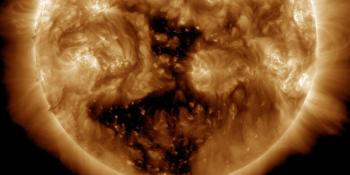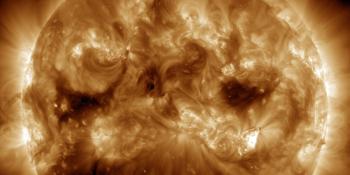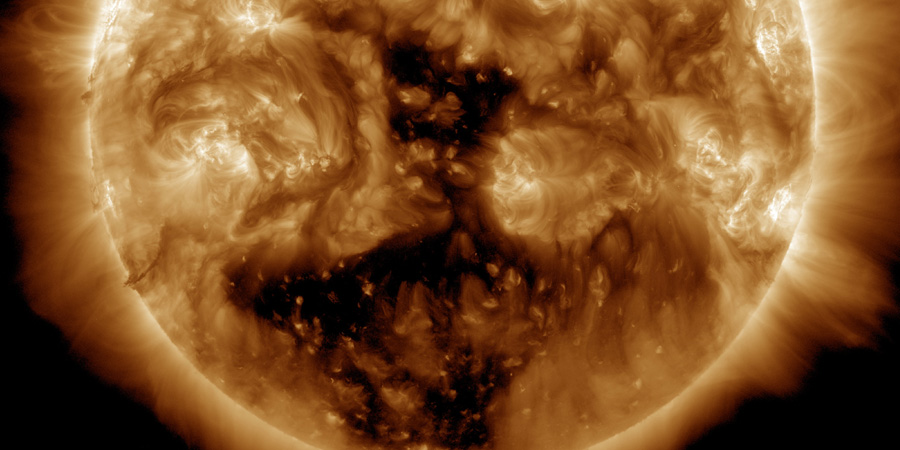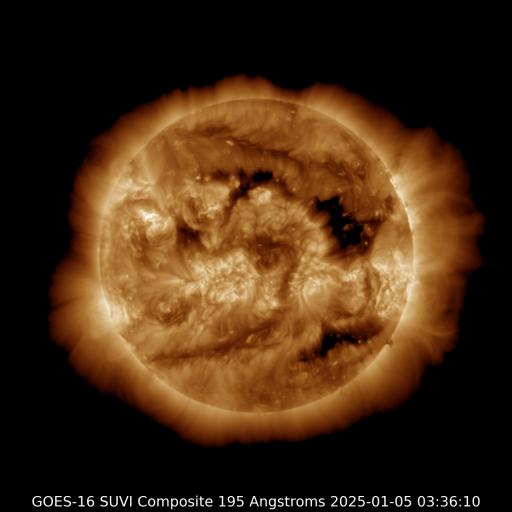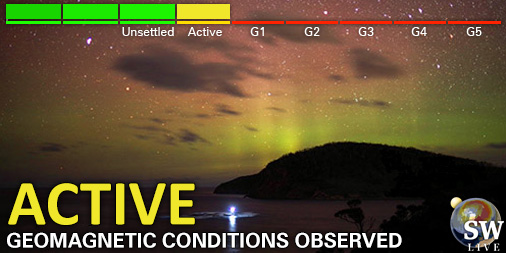Viewing archive of Saturday, 16 July 2022
Geophysical report
Solar and Geophysical Activity Summary 2022 Jul 16 0245 UTCPrepared by the NOAA © SWPC and processed by SpaceWeatherLive.com
Joint USAF/NOAA Solar and Geophysical Activity Summary
SGAS Number 197 Issued at 0245Z on 16 Jul 2022 This report is compiled from data received at SWO on 15 JulA. Energetic Events
Begin Max End Rgn Loc Xray Op 245MHz 10cm Sweep 0158 0158 0158 140 0352 0352 0352 110 0546 0549 0603 3058 N12E64 Sf 110 0730 0736 0740 3056 S18E12 C3.1 Sf 250 0929 0929 0936 3055 S16W32 Sf 100 0932 0933 0935 220 0945 0945 0945 110 1005 1005 1005 380 1156 1205 1211 3058 N13E60 C5.5 Sn 520 1320 1324 1329 3055 S17W35 Sf 450 1559 1559 1559 180 1559 1607 1615 3058 N12E58 C2.3 Sf 120 1652 1652 1652 160 1701 1701 1701 100 1826 1826 1827 210 2204 2213 2220 3058 N14E54 C2.9 Sf 110
B. Proton Events
C. Geomagnetic Activity Summary
D. Stratwarm
E. Daily Indices: (real-time preliminary/estimated values)
10 cm 171 SSN 141 Afr/Ap 007/010 X-ray Background C1.1 Daily Proton Fluence (flux accumulation over 24 hrs) GT 1 MeV 1.2e+05 GT 10 MeV 3.4e+04 p/(cm2-ster-day) (GOES-16 satellite synchronous orbit W75 degrees) Daily Electron Fluence GT 2 MeV 1.10e+07 e/(cm2-ster-day) (GOES-16 satellite synchronous orbit W75 degrees) 3 Hour K-indices Boulder 2 3 1 2 2 3 2 2 Planetary 2 3 0 1 2 3 3 3
F. Comments
None
All times in UTC
Current data suggests there is a slight possibility for aurora to appear at the following high latitude regions in the near future
Gillam, MB, Whitehorse, YT, Yellowknife, NTAnchorage, AK, Fairbanks, AK, Juneau, AK, Utqiagvik, AK
Latest news
Latest forum messages
Support SpaceWeatherLive.com!
A lot of people come to SpaceWeatherLive to follow the Sun's activity or if there is aurora to be seen, but with more traffic comes higher server costs. Consider a donation if you enjoy SpaceWeatherLive so we can keep the website online!

Latest alerts
Monday, 24 March 2025
Coronal hole faces Earth
The anticipated strong G3 geomagnetic storm watch never materialized as the coronal mass ejection that was supposed to arrive early yesterday didn't arrive until today just past midnight UTC. The impact was very lackluster with the Bt (total strength of the IMF) increasing to a moderate 15nT at best and the solar wind speed reaching just 420km/s. A far cry from the anticipated 700 to 800km/s. That once again goes to show how hard it is to forecast space weather events and any resulting geomagnetic conditions. We remain under the influence of the CME and high latitude sky watchers should remain alert for some nice aurora displays but middle latitude sky watchers will probably have to wait for the next opportunity.
Read more13:55 UTC - Coronal hole
A transequatorial coronal hole is facing Earth. Enhanced solar wind could arrive in ~3 days
02:45 UTC - Geomagnetic activity
Active geomagnetic conditions (Kp4) Threshold Reached: 02:33 UTC
Space weather facts
| Last X-flare | 2025/02/23 | X2.0 |
| Last M-flare | 2025/03/21 | M1.2 |
| Last geomagnetic storm | 2025/03/22 | Kp6- (G2) |
| Spotless days | |
|---|---|
| Last spotless day | 2022/06/08 |
| Monthly mean Sunspot Number | |
|---|---|
| February 2025 | 154.6 +17.6 |
| March 2025 | 138.3 -16.4 |
| Last 30 days | 136.1 -18.1 |
